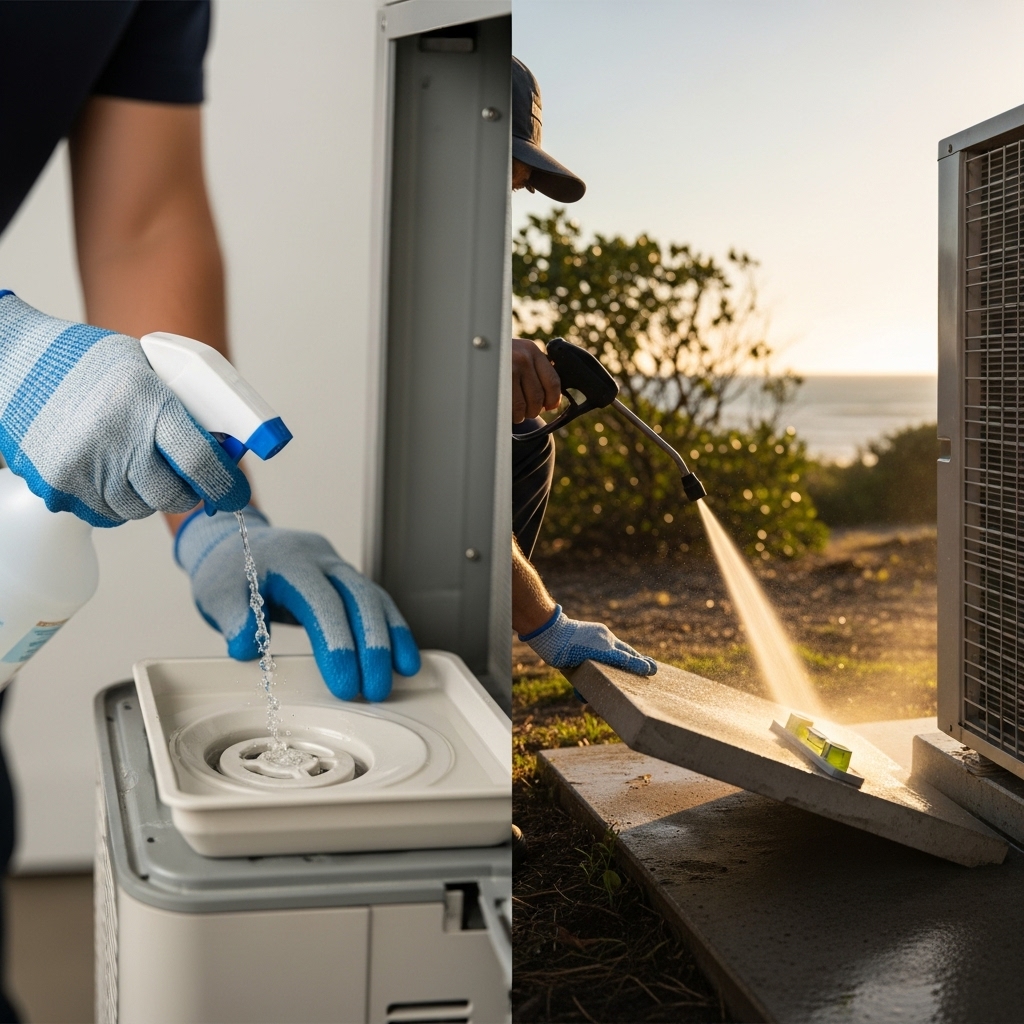When your AC falters during a Malibu warm spell, the difference between a quick recovery and a prolonged outage often comes down to the first steps you take. This repair-focused guide walks Malibu homeowners through safe, effective actions you can perform, where to draw the line for professional service, and how to verify that your system is truly back to normal afterward. The coastal environment adds an extra layer of complexity—salt air, fog, and gusty winds all influence how systems age and fail. Keep this reference handy, beginning with a short safety briefing and an early reminder about how modern air conditioning systems behave in coastal conditions.
Safety briefing and warranty awareness
Turn off power at the thermostat and the outdoor disconnect before touching equipment. Avoid removing service panels, testing capacitors, or opening refrigerant circuits. Many systems carry manufacturer warranties that require licensed service for internal repairs. Use the steps below to stabilize conditions and gather useful observations for a technician without risking damage or voiding coverage.
Initial stabilization
- Set the thermostat to “off” if you suspect icing or unusual sounds. Allow at least 30 minutes for ice to melt before restarting.
- Replace a dirty air filter with the correct size and type. Obstructed airflow causes many cooling failures and can trigger icing and short cycling.
- Clear debris around the outdoor unit. Maintain at least two feet of space in every direction and five feet above. Trim vegetation and remove windblown trash.
- Verify power. Check the breaker at the main panel and the outdoor disconnect. If the breaker trips repeatedly, stop and call a professional.
- Inspect the condensate drain. If accessible, add a cup of white vinegar to discourage algae and clear minor buildup. Empty any safety pan and verify that a float switch isn’t tripped.
Outdoor unit cleaning for coastal homes
With power off, gently rinse the outdoor coil using a low-pressure spray, directing water parallel to the fins. Salt residue and fine debris reduce heat transfer and stress the compressor. Avoid pressure washers and harsh chemicals. Straighten small fin bends with a fin comb or soft brush. Confirm that cabinet screws and the service panel are snug to keep mist out.
Simple repairs homeowners can do
- Thermostat batteries: Replace aging batteries and reseat the thermostat on its wall plate to ensure good contact.
- Loose panel noise: Tighten accessible screws that may rattle in wind gusts common to Malibu canyons.
- Blocked registers: Open and clear supply and return grilles. Relocate rugs or furnishings that reduce airflow.
- Uneven pad: If the outdoor pad has settled, carefully correct minor tilt with shims so the unit sits level and refrigerant returns properly inside the compressor.
- Line-set insulation: Replace split or UV-damaged insulation to protect efficiency and reduce sweating.
Repairs to leave for professionals
- Capacitors and contactors: High-voltage components hold charge and can be dangerous. Buzzing, stalling, or failure to start often traces here—call a pro.
- Motors and fans: Diagnosing bearings, replacing motors, and balancing blades require tools and training.
- Refrigerant-side issues: Low charge, leaks, or restrictions demand gauges, scales, and recovery equipment. DIY attempts risk injury and system damage.
- Control boards and sensors: Intermittent faults and error codes involve electrical testing best handled by trained technicians.
After-repair validation
- Visual sweep: Confirm that panels are secured, the area is clear, and the unit is level.
- Startup: Set the thermostat to cool and allow the system to run for 15 minutes.
- Supply feel: Air from registers should feel meaningfully cooler than room air. Listen for rattles or grinding.
- Outdoor exhaust: Warm air should discharge from the outdoor unit steadily. Watch for short cycling.
- Condensate flow: Verify that the drain is dripping steadily outside or into the designated drain line, not pooling near the unit.
Documentation worth keeping
Record filter sizes, install dates, and any part numbers or error codes a technician shares. Photograph the equipment labels and keep commissioning or service notes in a home file. Malibu homeowners may also note proximity to salt exposure; this context helps pros tailor corrosion protection and maintenance plans.
Environmental factors in Malibu repairs
Salt air accelerates corrosion on outdoor coils, fasteners, and disconnects. Marine layers add moisture that lingers around metal, while Santa Ana winds can load filters quickly and loosen roof or pad-mounted equipment. If you live close to the water, ask your contractor about protective coatings, stainless hardware, and UV-resistant line-set insulation during your next service visit.
Mid-project reality check
Partway through any DIY stabilization effort, step back to reassess airflow, cleanliness, and control settings. A quick return to basics is often the fastest fix. If you need a refresher on core air conditioning principles—clear coils, good airflow, proper drainage—review those before restarting the system so you don’t mask an underlying issue.
Preventive steps after the fix
- Set calendar reminders to check filters every month during peak season and after windy or smoky days.
- Rinse the outdoor coil several times per year if you are within a short distance of the ocean.
- Keep shrubs and stored items away from the outdoor unit to preserve airflow and service access.
- Use “auto” fan mode on damp or foggy days to avoid re-evaporating moisture from the indoor coil.
Frequently asked questions
Q: My system stopped suddenly—what’s the first thing to check? A: Verify the thermostat settings and power at both the breaker and outdoor disconnect. Replace the filter before restarting.
Q: I see ice on the refrigerant lines. What should I do? A: Turn the system off, set the fan to “on” to thaw faster, replace the filter, and call a professional if icing returns.
Q: The outdoor unit buzzes but won’t start. Can I fix this? A: Do not keep trying to start it. This often points to a start component or motor issue that requires professional service.
Q: Water is pooling by the air handler. Is this an emergency? A: Clear the drain with vinegar if accessible and safe, then call for service if water persists. A tripped float switch protects against overflow but signals a blockage.
Q: How can I make repairs last longer near the ocean? A: Ask about corrosion-resistant parts and coatings, keep coils clean, and ensure line-set insulation is UV-stable.
Restore comfort and protect your investment
If your system still struggles after these steps, schedule a professional evaluation. Share the observations you collected to speed diagnosis. For guidance on choosing upgrades, maintenance plans, and best practices that keep Malibu homes comfortable, partner with a trusted specialist who can specify, service, and optimize your air conditioning system for long, salt-kissed summers and cool, foggy mornings alike.

